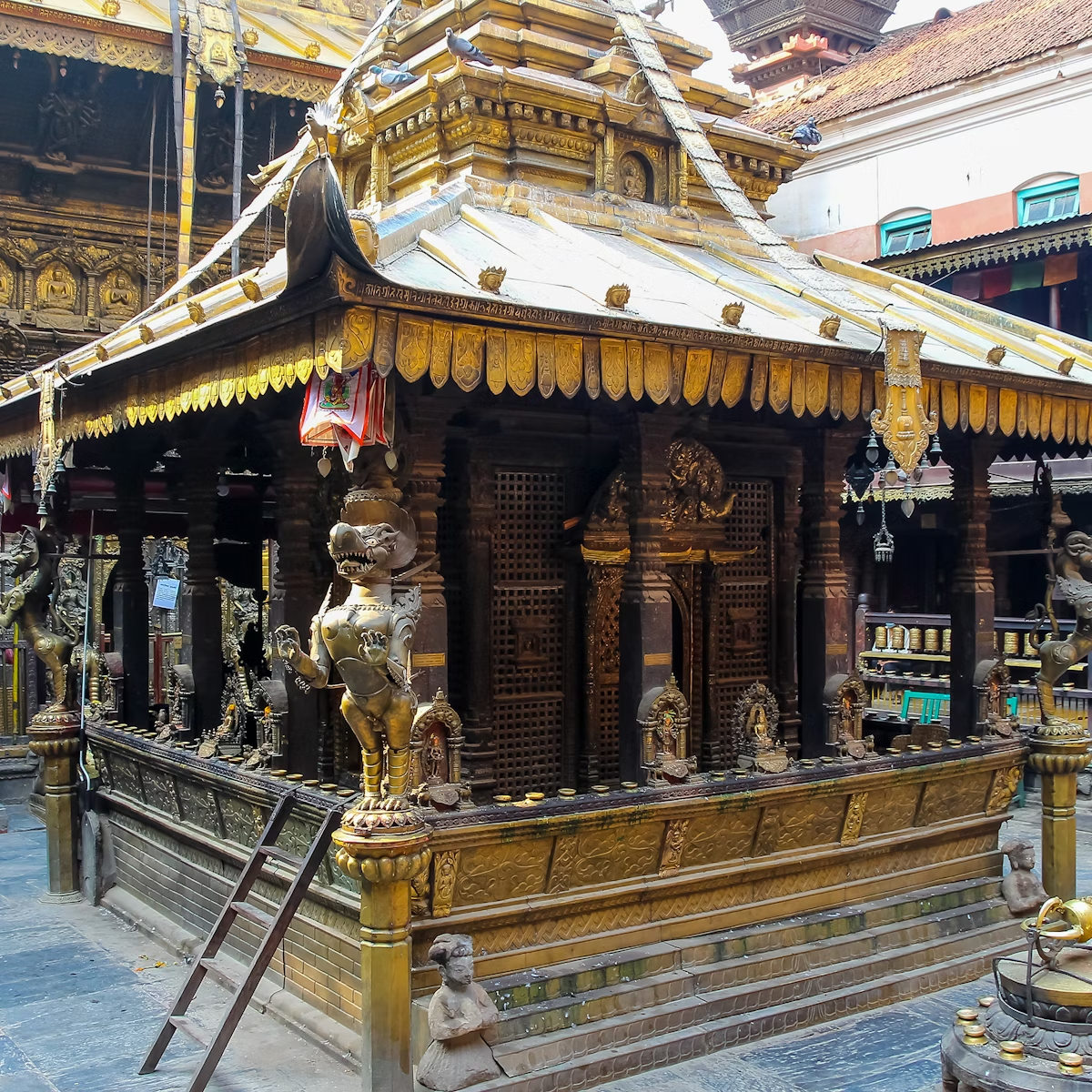Undiminished by the earthquake, the pagoda-style Pashupatinath Temple was constructed in 1696, but has been a site of Hindu and Buddhist worship for far longer. Only Hindus are allowed to enter the compound of the famous main temple, but you can catch tantalising glimpses of what is going on inside from several points around the perimeter wall. The nearby riverside steps are Nepal's most holy cremation site.
From the main gate on the west side of the compound, you can view the mighty golden behind of an enormous brass statue of Nandi, Shiva’s bull. Inside the shrine, hidden from view, is a black, four-headed image of Pashupati. There are good views of the gilded rooftop from the top of the terraces on the east side of the Bagmati.
If you follow the road running south from the side entrance to the temple, you will pass the Panch Deval, a former temple complex that survived the quake and acts as a social welfare centre for destitute elderly Nepalis.







